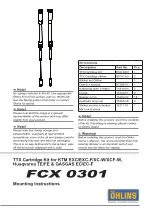
phase polarizing voltage. This measurement is greatly simplified if the polarizing reference voltage is set to 0°
and the current phase angle is measured with respect to this reference.
Alternatively, the instrument can be checked at the 4 points marked a, b, c & d on
Forward
Reverse
Lag (point C)
Lead (point A)
Lead (point B)
Lag (point D)
Pick-up
Drop-off
Pick-up
Drop-off
Pick-up
Drop-off
Pick-up
Drop-off
MTA
MTA -85
MTA +85
MTA -85
MTA -85
Phase A
Phase B
Phase C
[dw_7SR5_function67FunctionalTests, 1, en_US]
Figure 9-10
Directional Phase Fault Boundary System Angles
5. With the instrument reading
Fwd
or
Rev
, reduce the voltage until the element resets. Record the minimum
phase-phase operate voltage.
Minimum Voltage Setting
Measured
2 Out Of 3 Logic
Ensure that at least 1
Phase Overcurrent
element is set to
Directional
. Apply balanced nominal
voltage. Apply current at a level above the 50/51 setting on phase A only at the characteristic angle for
forward operation, normally 45° lagging. Ensure no
Directional Phase Overcurrent
element opera-
tion occurs. Note that non-directional
Phase Overcurrent
and non-direction
Earth Fault
elements may
operate unless disabled.
Repeat the test with phase A current as above but also with equal current in the B phase at 180° to that in the
A phase.
Functional Tests
9.10 Protection Functional Tests
444
Reyrolle 7SR5, Transformer Protection Device, Device Manual
C53000-G7040-C015-1, Edition 11.2019
















































